Abstract
A total of 153 clinical isolates and 10 reference strains were employed in an investigation of CO2-dependent streptococci. Their selection was based on a lactic acid homofermentative end product. This group of organisms grew best in 5 to 10% CO2, and several species, including Streptococcus mutans, S. intermedius, Streptococcus MG, S. anginosus, and S. constellatus, required increased CO2 for primary recovery. A basal medium of thioglycolate with 0.1% Tween 80 and phenol red was prepared and used with selected carbohydrates. This media provided luxuriant growth. Serological testing failed to give any definitive correlation with species identification. A shortened differentiation scheme, combined from previous studies, was proposed.
Full text
PDF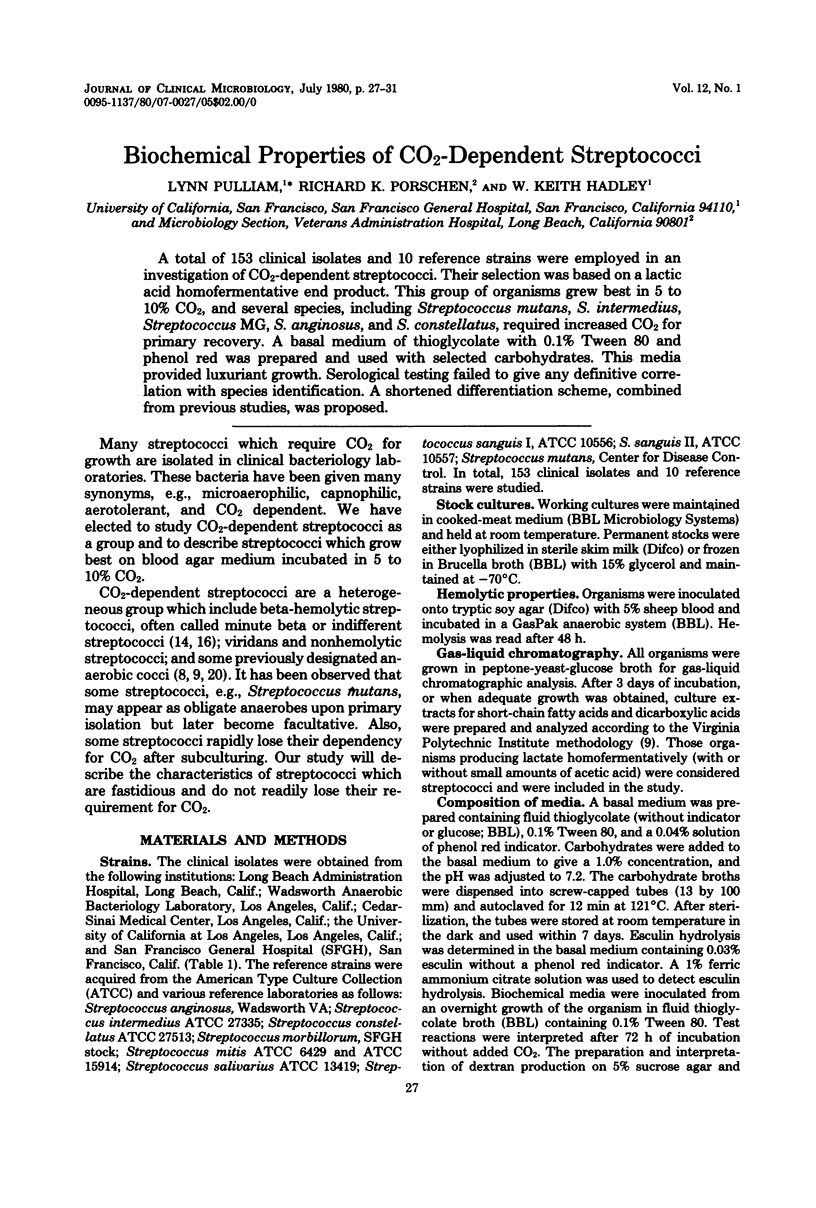
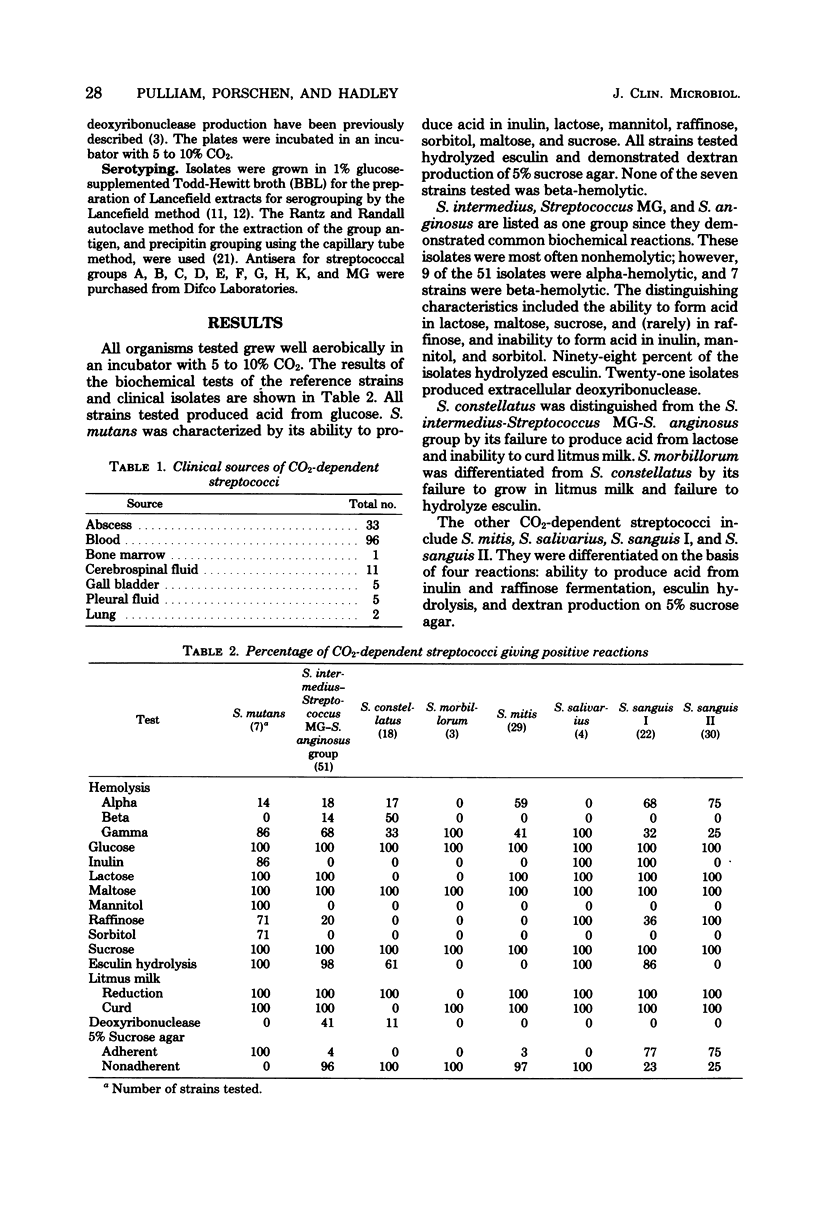
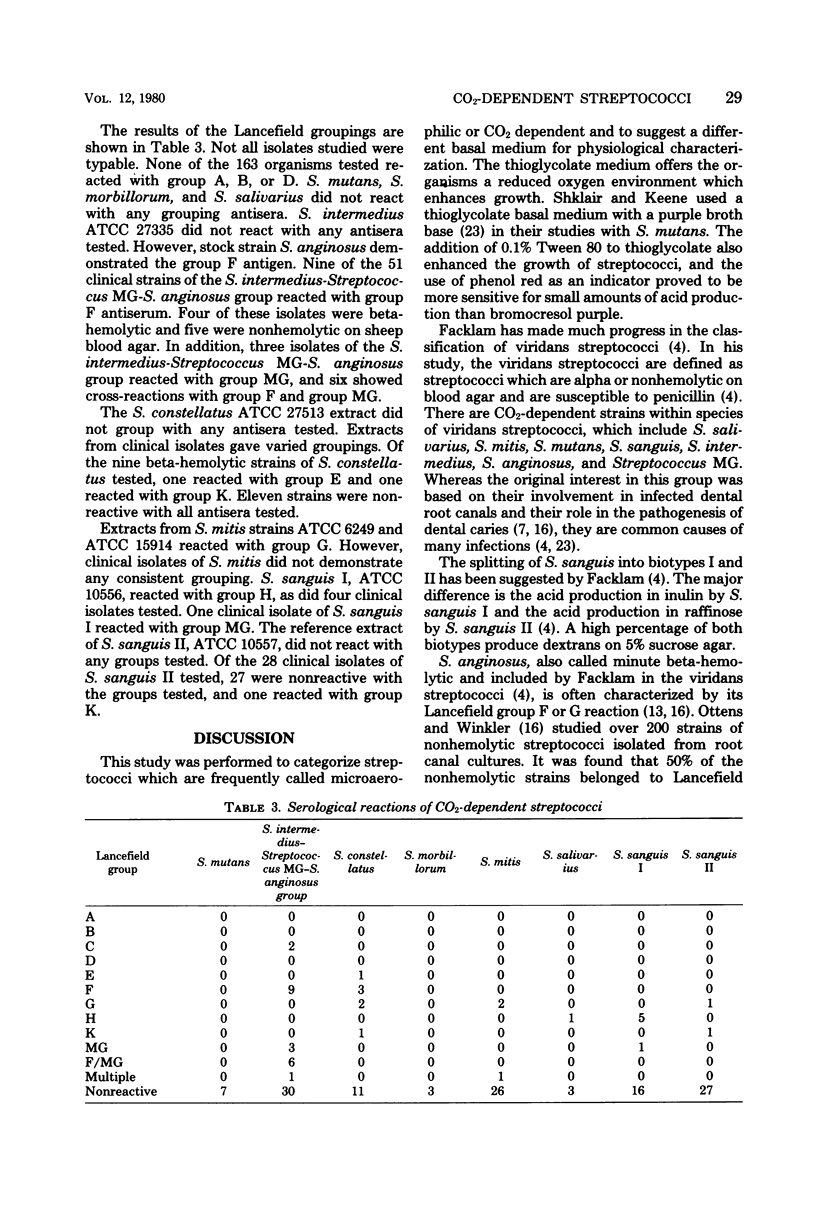
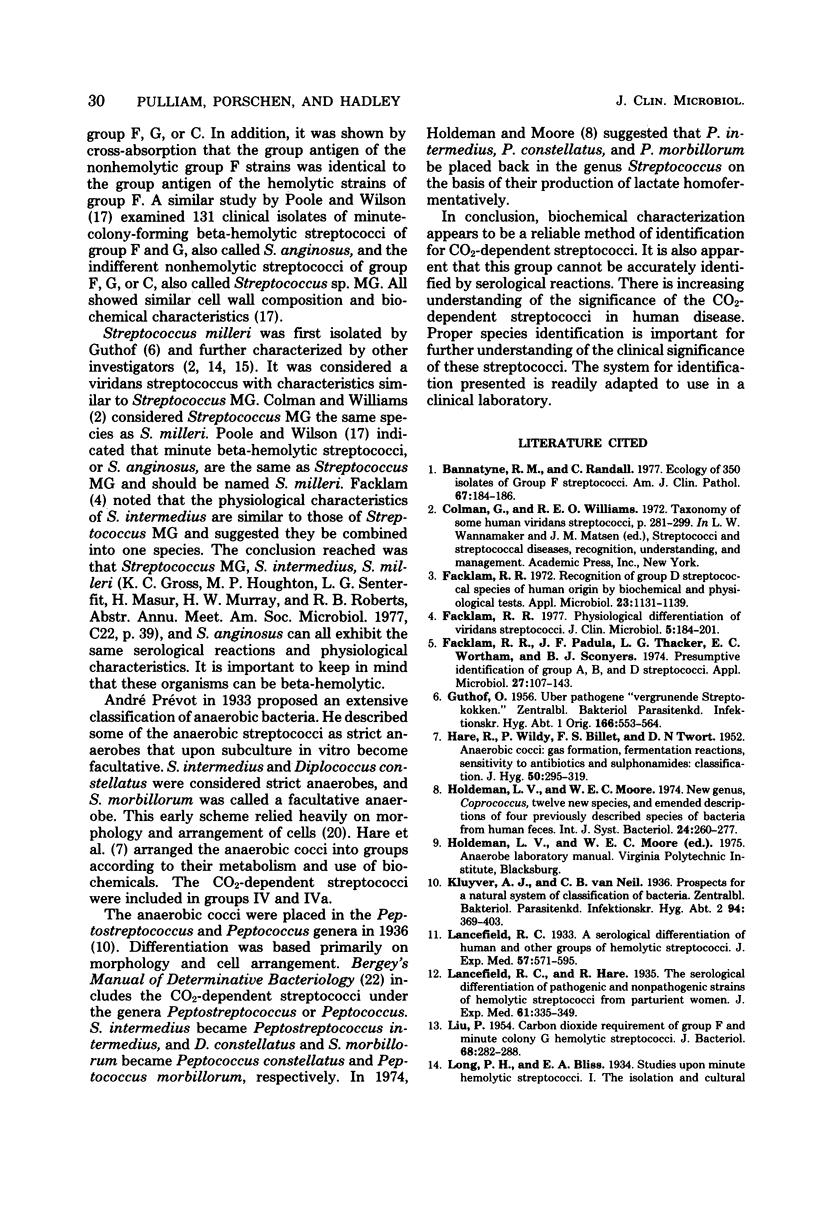
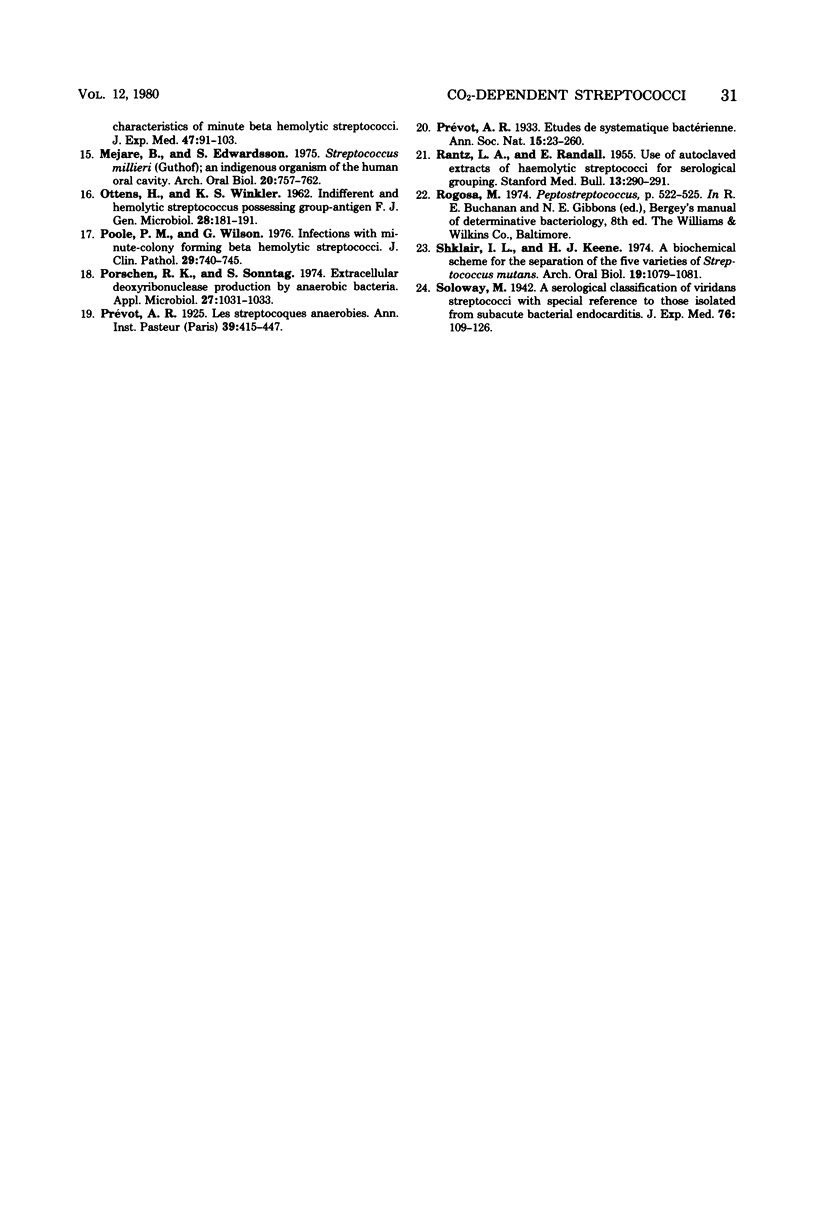
Selected References
These references are in PubMed. This may not be the complete list of references from this article.
- Bannatyne R. M., Randall C. Ecology of 350 isolates of group F Streptococcus. Am J Clin Pathol. 1977 Feb;67(2):184–186. doi: 10.1093/ajcp/67.2.184. [DOI] [PubMed] [Google Scholar]
- Facklam R. R., Padula J. F., Thacker L. G., Wortham E. C., Sconyers B. J. Presumptive identification of group A, B, and D streptococci. Appl Microbiol. 1974 Jan;27(1):107–113. doi: 10.1128/am.27.1.107-113.1974. [DOI] [PMC free article] [PubMed] [Google Scholar]
- Facklam R. R. Physiological differentiation of viridans streptococci. J Clin Microbiol. 1977 Feb;5(2):184–201. doi: 10.1128/jcm.5.2.184-201.1977. [DOI] [PMC free article] [PubMed] [Google Scholar]
- Facklam R. R. Recognition of group D streptococcal species of human origin by biochemical and physiological tests. Appl Microbiol. 1972 Jun;23(6):1131–1139. doi: 10.1128/am.23.6.1131-1139.1972. [DOI] [PMC free article] [PubMed] [Google Scholar]
- GUTHOF O. Ueber pathogene vergrünende Streptokokken; Streptokokken-Befunde bei dentogenen Abszessen und Infiltraten im Bereich der Mundhöhle. Zentralbl Bakteriol Orig. 1956 Sep;166(7-8):553–564. [PubMed] [Google Scholar]
- HARE R., WILDY P., BILLETT F. S., TWORT D. N. The anaerobic cocci: gas formation, fermentation reactions, sensitivity to antibiotics and sulphonamides; classification. J Hyg (Lond) 1952 Sep;50(3):295–319. doi: 10.1017/s0022172400019628. [DOI] [PMC free article] [PubMed] [Google Scholar]
- LIU P. Carbon dioxide requirement of group F and minute colony G hemolytic streptococci. J Bacteriol. 1954 Sep;68(3):282–288. doi: 10.1128/jb.68.3.282-288.1954. [DOI] [PMC free article] [PubMed] [Google Scholar]
- Mejàre B., Edwardsson S. Streptococcus milleri (Guthof); an indigenous organism of the human oral cavity. Arch Oral Biol. 1975 Nov;20(11):757–762. doi: 10.1016/0003-9969(75)90048-5. [DOI] [PubMed] [Google Scholar]
- OTTENS H., WINKLER K. C. Indifferent and haemolytic streptococci possessing group-antigen F. J Gen Microbiol. 1962 Apr;28:181–191. doi: 10.1099/00221287-28-1-181. [DOI] [PubMed] [Google Scholar]
- Poole P. M., Wilson G. Infection with minute-colony-forming beta-haemolytic streptococci. J Clin Pathol. 1976 Aug;29(8):740–745. doi: 10.1136/jcp.29.8.740. [DOI] [PMC free article] [PubMed] [Google Scholar]
- Porschen R. K., Sonntag S. Extracellular deoxyribonuclease production by anaerobic bacteria. Appl Microbiol. 1974 Jun;27(6):1031–1033. doi: 10.1128/am.27.6.1031-1033.1974. [DOI] [PMC free article] [PubMed] [Google Scholar]
- RANTZ L. A., RANDALL E. Use of autoclaved extracts of hemolytic streptococci for serological grouping. Stanford Med Bull. 1955 May;13(2):290–291. [PubMed] [Google Scholar]
- Shklair I. L., Keene H. J. A biochemical scheme for the separation of the five varieties of Streptococcus mutans. Arch Oral Biol. 1974 Nov;19(11):1079–1081. doi: 10.1016/0003-9969(74)90099-5. [DOI] [PubMed] [Google Scholar]


